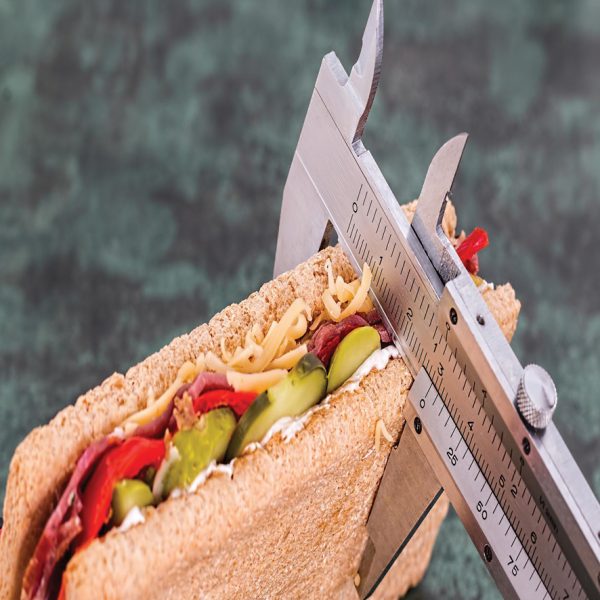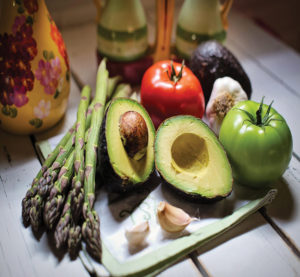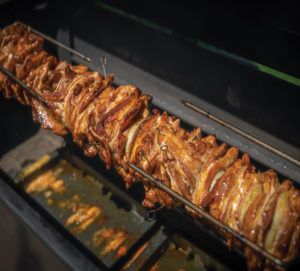Dialing in Your Diet

By Bart Walters
It seems like every few years a new wave of diet trends washes ashore, and we just can’t help but try some of them. Keto, Carnivore, Vegan, Intermittent Fasting, OMAD, and on and on. Most of us will eventually reach a threshold where we can’t just eat what we want and rely on exercise to burn off the calories. We have to submit to the “diet” part of doctor recommended “diet and exercise”. During the past year, I’ve stepped up to that challenge and have experienced some interesting results. Making changes to my eating protocol (see what I did there … got rid of that dirty “d” word) wasn’t easy. I tried Vegan, Keto, Intermittent Fasting, and a combination of regimens.
A vegan diet excludes all meat and animal products (meat, poultry, fish, seafood, dairy, and eggs), whereas a vegetarian diet excludes meat, poultry, fish, and seafood, but may include eggs and dairy. There is an old joke that pokes fun at vegans by saying, “You know how you can tell if someone is vegan? Don’t worry, they will tell you within the first 2 minutes of any conversation”. But do you know why vegans always want to tell you about it? Because it’s hard as hell! I went vegan for six weeks and gave up. I think the reason so many dedicated vegans are kind of militant about not harming animals is, you really need more motivation than just eating healthier to stick with this way of living.

A lot of Thai people don’t eat animals or animal products. Most restaurants have a lot of vegan selections. The markets are full of fresh fruits and vegetables. Veganism isn’t looked at like it’s a fad or alternate lifestyle. Going vegan in Thailand is relatively easy. But for me, the difficult part was always feeling hungry. It seemed like I was eating all day long. And I got bored with what I was eating. I did feel pretty healthy, but I hadn’t lost much weight and my digestive system was a wreck. When you make radical changes in your diet, you should expect a bit of chaos in your gut.
Next, I tried Keto. A “ketogenic” approach focuses on eating very little carbohydrates, increased fat, and an adequate amount of protein. Sugar is pretty much forbidden for keto disciples, even from fruit. If you try keto, you’ll learn which fruits are high on the glycemic index and which are lower with more fiber to offset the sugar. I went keto for two months. There’s a lot of meat and fat. The whole idea is to switch your body from burning carbs for energy to burning fat. There are hundreds of YouTube videos by “experts” on the keto diet that can explain the science better than I can.

What I can tell you is that it works. Within one week, I started losing weight at a pace of ½ kilo per day. I felt good. My digestive system suffered only minor irritation. And it was easy to stay on the diet because I could see results. However, keto was not sustainable for me. I can’t eat that much meat. I also don’t like butter, cheese, and a lot of the other fat-rich foods you have to eat on keto to make it work. What’s more, I craved carbs like rice, bread, and noodles. Even more difficult was not eating all the fruits I love like mangoes, pineapples, and bananas. In the end, I concluded that the keto approach was just tricking my body into losing weight. I knew for sure I would gain the weight back the minute I broke away from the rigid regimen, and I did. Now that I look back, I’m thinking, “A diet that says bananas are bad for you probably isn’t good for you”.
Intermittent Fasting (IF) is limiting your food intake to a “feeding window”.The most common version of IF is just cutting out breakfast. Let’s say you eat dinner at 6 PM and nothing else after that. If you don’t eat again until noon the next day, you’ve fasted 18 hours. Then you can eat a hearty meal for lunch and another before 6 PM and start the YouTube library can better explain the science of this approach than me, but I can tell you that IF also works. I even went so far as to try the extreme version of IF called OMAD (One Meal a Day) and that works even better.
Intermittent Fasting is just using math for weight loss. If you cut out one feeding, and all the snacks, it is much easier to find yourself burning more calories than you take in (caloric deficit). I also noticed that it takes a fair amount of discipline not to gorge yourself at meals to make up for the calories you aren’t consuming at whichever meals you are skipping.

Now I’m employing a combination approach. I eat a low-carb (not no-carb)diet with lots of healthy non-animal fats like avocadoes, nut butters, etc., and lean cuts of meat, poultry, and fish. I’m still on IF with an 8-hour feeding window. The weight is slowly coming off again.Like most of you, I encounter other temptations that make sticking to a diet hard. Portion control can be difficult. I’m afraid my mother is going to haunt me in my dreams for not “eating everything on my plate”. And I like to drink alcohol, Not only is alcohol itself fattening, but I make poor food decisions after consuming a few drinks (I can feel many of you nodding your heads in affirmation).
What I think is important is to keep fighting the good fight and dial in a diet that works for your body and your lifestyle. I am hopeful and optimistic that one day I can stop telling this joke:
“I lost fifty kilos this year. Unfortunately, it was the same ten kilos five times”! www.bartonwalters.com

